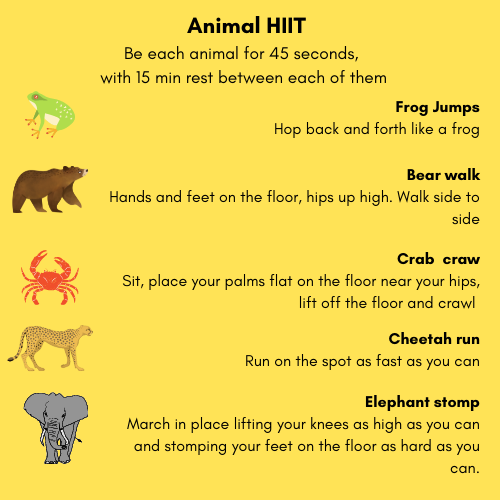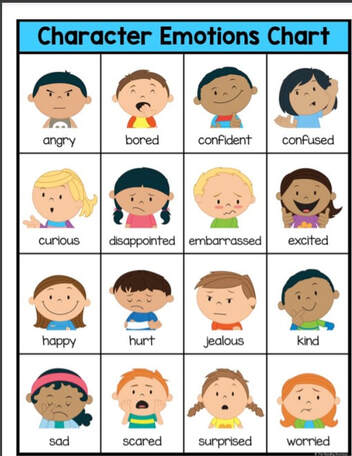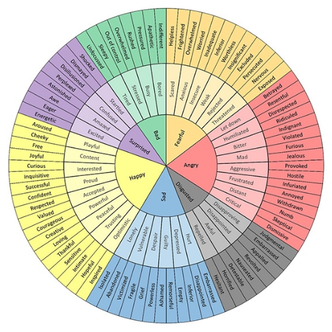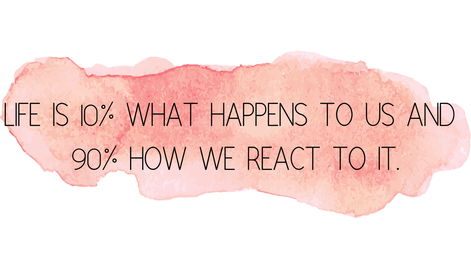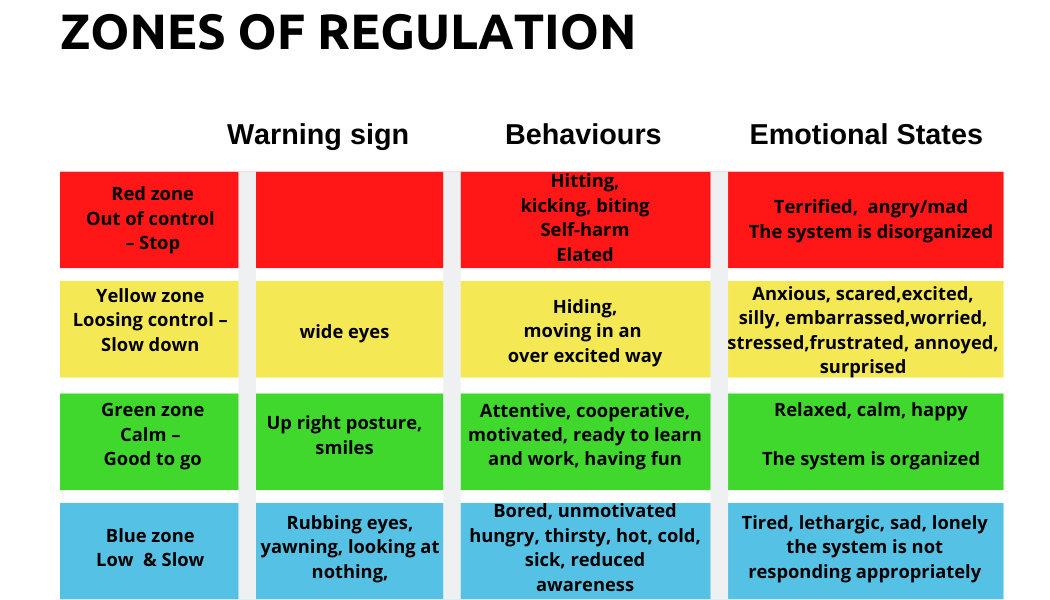Welcome to Sami's
|
|
Booking call - 30th September 2021
|
|
Quick wins. You can print it by clicking on each picture.
|
|
|
|
Physical exercise ideas
Encourage a lot of exercise and challenging physical activities.
|
Love cup activities ideas
If when playing rough there is an injury (physical or emotional), take a pause, acknowledge the hurt, ask if they want to carry on or if they should leave for another day. Their feelings are more important than the game! It can also be helpful to have organised pauses to lower the energy levels from time to time. |
|
Essential oil blend for bedtime calm
Here is a lovely blend you can use in the bath or as a spray on the lead up to bedtime. 4 drops lavender 2 drops vertiver 1 drop clary sage 1 drop lemon |
Week 2This week we will work on:
Wind down time
Often there is a misunderstanding and the bedtime routine is bundled together with the period of winding down. These two are separate happenings that take place before sleep. The wind down is there to help children transition from active day to restful night. It is not necessary for the elements to be consistent from day to day as with the bedtime routine. The focus is on releasing the rest of energy and emotional build up AND on having a calm and restful environment. The bedtime routine (or rhythm) is there for connection, containment and calm. It is very important for the elements of the bedtime routine to be very consistent from day to day, even when there is variation on who is helping the children at this time. The winding down period could last up to 2 hours before bed. At this time, it is helpful to do activities to increase melatonin and oxytocin. Some ideas are: some 'cup filling' games, followed by calm voices, less noise, relaxing music, dimmer lighting, reading a book together, television and other screens off– no blue lights for 1 -2 hours before sleep. It is very likely dinner will be within the wind down time.
The reluctant napper!
The idea is to "rebrand" the nap, as you've done! You could call it snuggle time, story time or a rest. Here are some ideas if you need variation:
|
Week 3This week we will work on preparing the ground for next week's work by:
|
Task 1 Name emotions. Help your child identify and name emotions
If your child is very upset, wait for them to be regulated and then talk about the emotions. Be careful to avoid judging and criticising the emotion. The objective is to identify the emotions and not to place value on them. An important step is to find good solutions for when we are becoming dysregulated.
If we are able to recognize when we are becoming less regulated, we are able to do something about it to manage our feelings and get ourselves to a healthy place. ‘Zones of regulation’ is a tool to help parents identify when a child may need support or guidance to regulating their emotions. Understanding the zones of regulation is also helpful for children to identify big feelings and develop skills to help regulate their own emotions during the day, when they are old enough. Throughout our day we fluctuate through all zones. What is important is to be able to regulate ourselves so to go back to the Green zone, where our parasympathetic system is active and we feel relaxed, calm as well as ready to learn and socialise. |
|
Once we identify in which zone ourselves or our child are, we can use regulating strategies to return or remain in the green zone.
Task 2 Explore when your child is on the different zones, what triggers them to go there and what helps them to return (or maintain) to the green zone and feel calm. When trying strategies to return to the green zone, explore what works for your child and keep an open mind. Also ask to consider:
Regulating strategies
Here are some ideas of strategies, please add on to this if you find other things that work for your child. Strategies can provide the sensory input the child needs to maintain a calm, alert and organised state or use posture, flexion and breath to organise the body and re-set the nervous system The following strategies provide the sensory input children need to maintain a calm, alert and organised state. Tactile system:
Propioceptive system:
These activities are not to do too near bed time. If your child needs this kind of calming activities at bedtime, try balancing lying down, tummy down, on a gym ball on the trampoline. The idea is so your child is in curled up postures, and not extended positions. These postures are more calming and encourage deeper out breaths. Auditory system:
Vestibular system:
The follow strategies support regulation and help re-setting the nervous system Physical and sensory strategies:
Use of self and communication strategies:
Environmental strategies:
Calming strategies:
Week 4This week is all about the night. The idea is to lower the intake of liquid in the night as well as soothing Sami back to sleep in different ways other than nursing. Bellow I suggest a few options for you to follow. Choose which one would suit you best. For toddlers, stopping breastfeeding can be an emotional task. You may need to handle it with lots of time, patience and compassion.
Communication can help. here are a couple of ideas:
Does night- weaning improve sleep? It is important to know that night-weaning does not always lead to an immediate improvement in sleep. It may take some weeks before you get consolidated stretches. Three important points to do it now are:
How to do it Preparation ahead:
Tonight is the night You will need to decide how night-weaning or reducing night feeds will go for you. Here are a few options:
Which option you choose is up to you. Sometimes people will start very gently and slowly, and work up the steps until they get to somewhere they feel comfortable. It will also depend on how persistent Sami's personality is. I often find strong-willed toddlers need very clear and black or white strategy. Sometimes they get upset and confused with the mixed messages of being able to feed at sometime but not at other times. Other toddles, who are more sensitive, will need a very gradual and sensitive reduction of feeds. Be guided by your instincts and your knowledge of Sami What to do when not feeding to sleep Of course that when you are not feeding Sami in the night, you will need to offer other forms of comfort - such as cuddles, stroking, shushing, patting, or holding. Don't worry about what you have to do , you and Sami will be settling in and adjusting to another way of responsive parenting. Change can be hard for most children, so he will need lots of reassurances. Remember that there are many ways of being responsive - feeding has worked for you for a long time, but it doesn't mean there are no other ways. Also important to say that if at any time it doesn't feel right, or you change your mind, it is ok to stop and do what feels right. These strategies will still be open to you whenever you choose to try again. but try not to start and stop the process many times - it can feel unsettling. What to expect Night-weaning is not usually quick, easy and free of drama. That is why we have worked in many other points before tackling this. Nevertheless, some children do surprise their parents! But it is sensible to expect several disrupted nights. Sami may plea, beg, negotiate, tug at your clothing, demand, cry and get angry. There may be ugly crying with snot. Usually it can take 3-5 nights of your child asking and protesting. Often the first night is the worse, and then it quickly gets better. Be warned: It is really usual to see great improvement in the first few nights the on night 4-5, you may see a backslide. This is normal! Stay calm, and don't lose hope A few tips
Week 5
You decided you needed more time to focus on the past week's tasks in preparation for the night time work. Tasks for this week:
Zoom call on 01/11/2021
Here are the main points from our conversation:
Tasks for the next few day:
|
Week 6This week is mainly about celebrating all of your achievements! But I will also add a few suggestions for the future on:
Dropping the last nap
What’s tricky about nap transitions is that even though your child is ready to drop that nap, there will still be an adjustment period as they transition into less overall daytime sleep and longer periods of wakefulness. It is common for children to just become more difficult to nap for example, but then they are very tired by bedtime and the bedtime routine becomes stressful and difficult. They may cry more, have a bit of a hard time settling down, or need extra support. They may go back and forth between the old and new schedule for a bit. All of that is normal and expected. They might then wake more often in the night as a result of being too tired at bedtime. Here are some signs your child is ready to drop a nap: Ask yourself: Are you seeing any of these signs lasting more than 7-10 days?
Your child is going through a big transition and progression, and progressions are not linear! So here are some tips to help you navigate through this period
|
Night time ideasRibbon trick Great tool to maintain connection, and it works well for children who are anxious about being left alone, and need a parent to stay with them . It helps children understand concepts that are difficult to imagine or intangible. The idea with the ribbon is to create a physical reminder that you and your child are still connected even when you are not physically present. How to do it:
A lot of children love the physical imagery with the ribbon, and even when the ribbon is no longer needed, children can imagine in their mind’s eye a ribbon or thread running from themselves to their parent in another room. And here is a story to go alongside it: “The Invisible String” by Patrice Karst Pop-outs This is a great tool for eventually moving your child towards being able to fall asleep alone (when they are ready). Please note this is definitely NOT controlled crying! In fact, if your child starts to cry, this is the wrong tool to use. How to do it:
The idea with pop-out is that your child learns through multiple repetitions that you always come back. You never leave them long enough for them to worry or get upset, and you show them with your behaviour that they do not need to cry to get you back in the room. You ultimately want your child to get bored of you leaving. They are so confident and relaxed about you always coming back that they don’t fret or flinch when you leave. Eventually, you’ll be able to leave the room frequently, and stay out for longer. And at some point, because your child is so confident you’ll come back, they will fall asleep without you even being there. It may take a long time, but it is absolute no cry and zero stress. First minute alone A variation on the pop-out. Instead of coming in and out frequently, you give your child the first minute on their own after you’ve said good-night. After the first minute, come and stay with your child until they are asleep. The idea isn’t to make them upset, so if your child gets upset, you may need to wait with them for a while longer before trying again. Once the first minute has worked well, give it a few days staying at the one-minute mark, and then upgrade to two minutes. Go very slowly so your child doesn’t notice that the time is extending. The idea is to build confidence that you always come back, and they begin to relax during that alone time. Go more slowly at first, as your child gets used to the idea, and then you may find you can move on to staying out of the room for longer once their confidence is built. 12th November - end of the programDear Jihane and Matteo
It was really great working with you in the last 6 weeks. You have made some incredible progress with Sami's sleep situation through hard work and consistency. I hope you can find some time to celebrate your achievements! What were your goals? You had two general goals Your main goals were:
Sami was ready to embrace all the changes and adjustments that you introduced and you were ready to move on to the next stage in your parenting. With creativity and consciousness you managed to achieve both your goals and when beyond that stopping the night feeds and finding new ways to help Sami regulate his emotions (music is power!) I believe one of your main achievements was to find a better balance between being responsive to the children's needs and wants and taking the lead as parents. This alone will set you on a good path of parenting older children. You are doing a fantastic job in parenting Malik and Sami in a responsive way! You will never regret this. It has been a pleasure going through these weeks with you and seeing all the improvements emerge. I hope you found the program has helped you all to understand Sami's needs better and to develop some tools you can use for the times ahead. As Sami grows and his sleep changes, if you need further support I offer a one-off video call and top up call. Here is the link for more information https://www.calm-sleep.com/services.html Lastly, I would be very grateful if you could share a review here and/or email any feedback that will make the service better for future parents. All the best Karina |


